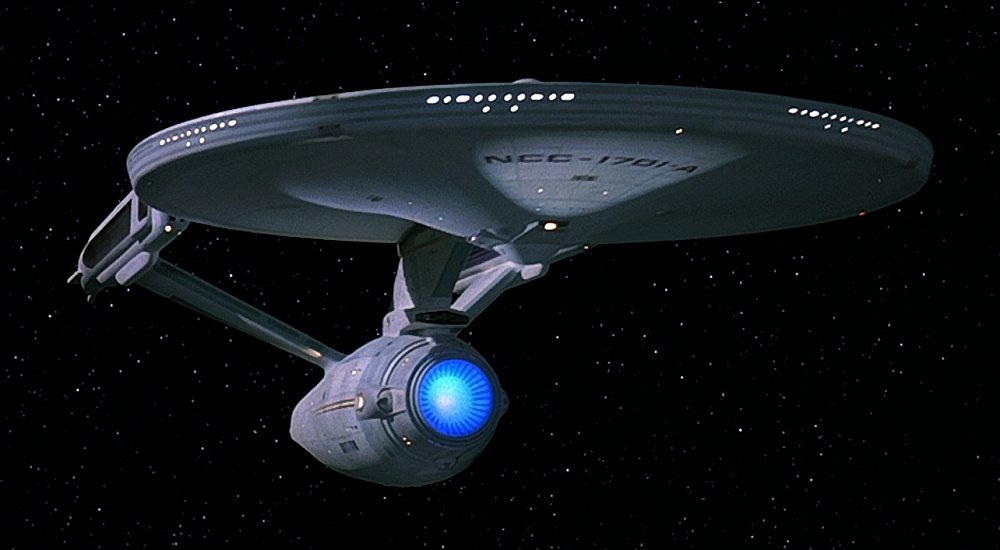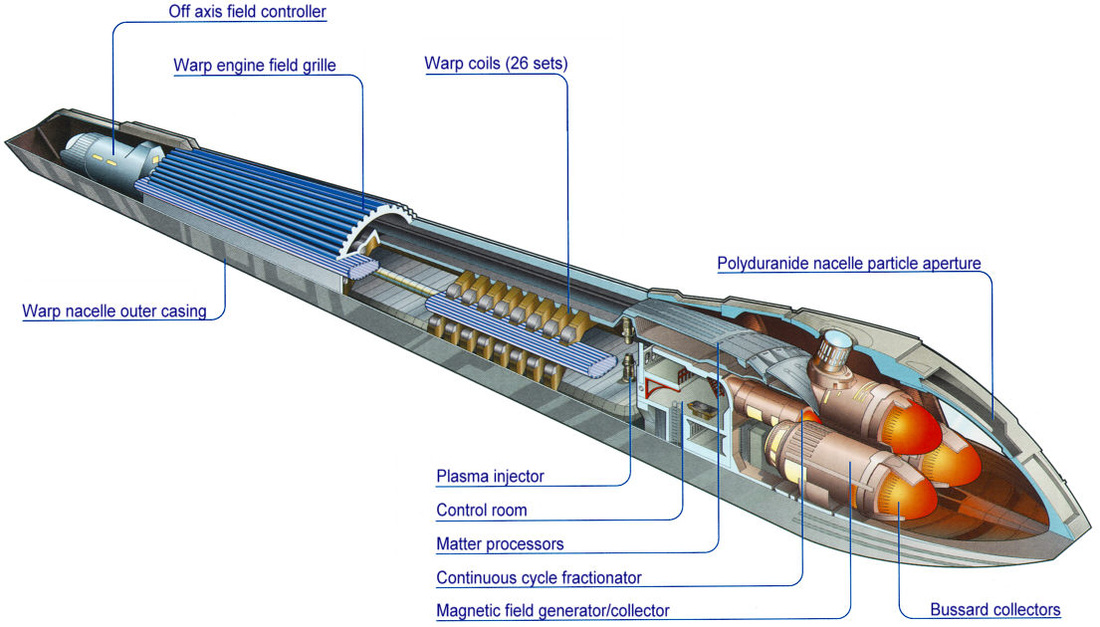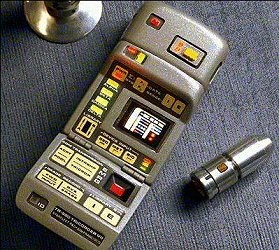One of the most famously known things from Star Trek would have to be the USS Enterprise. Although there were several USS Enterprises, the notion of the USS Enterprise is famously known in the Science Fiction Universe. The first USS Enterprise was a Constitution Class Starship captained originally by Robert April, Christopher Pike, Willard Decker, and in later years Captain Spock. But the most famous captain of the Enterprise is James T. Kirk. The first two USS Enterprises were Constitution class ships. The third USS Enterprise was an Excelsior class ship. Fourth being an Ambassador Class. Fifth, Galaxy Class; and the last USS Enterprise, NCC 1701-E, was a Sovereign Class ship. (1)
Since the original Starships, travelling the galaxy was a priority. But what made a big impact on interstellar travel was the invention of the Warp Drive. In the year 2063, Zefram Cochrane developed and was the first to implement the warp drive. According to Memory Alpha, with this launch of the Phoenix with the first implemented warp drive in use. Because of this, the Vulcans were able to detect this ship, which means they were able to make first contact with the human race. This was the human race’s first encounter with extraterrestrial life.
The original term coined for the warp drive was “space warp generator.” But slowly the term Warp Drive caught on and has been used by the United Federation of Planets. Not only is it used by the United Federation of Planets, but it is used by the fan base and people to describe traveling fast in a vehicle. (2)
What is the Warp Drive though, and how does it work?
Well:
The original term coined for the warp drive was “space warp generator.” But slowly the term Warp Drive caught on and has been used by the United Federation of Planets. Not only is it used by the United Federation of Planets, but it is used by the fan base and people to describe traveling fast in a vehicle. (2)
What is the Warp Drive though, and how does it work?
Well:
“24th century Federation warp engines were fueled by the reaction of matter (deuterium) and antimatter (antideuterium), mediated through an assembly of dilithium crystals, which were nonreactive with antimatter when subjected to high-frequency electromagnetic fields. This reaction produced a highly energetic plasma, called electro-plasma or warp plasma, which was channeled by plasma conduits through the electro-plasma system (EPS). The electro-plasma was funneled by plasma injectors into a series of warp field coils, usually located in remote warp nacelles. These coils were composed of verterium cortenide and generated the warp field.” – Memory Alpha
Much like my previous post about time travel, this uses a similar principle that some of the time travel technology is based on. This warp drive creates a warp field, a sort of bubble that surrounds the ship, and makes it able to travel through space that has been distorted directly around the bubble. Because of all of these combined, the ship is able to travel faster than the speed of light.
One thing that should be combined with the warp drive should be the Inertial Dampener. Because of the quick acceleration without the inertial dampeners would cause extreme damage to the crew and the ship. The Inertial dampeners work by countering the affects from the warp drive. “For the most part, it's an invisible seatbelt substitute for crew and cargo.” –TvTropes.
Out of the world of science fiction and into real science, inertial dampeners aren’t that far off from being a reality. In fact, nowadays there are things that act much like inertial dampeners. But as for the faster than light travel being a thing, that is still the makings of science fiction.
One type of science that is like the science fictitious inertial dampeners are the flight suits that fighter jet pilots wear. These flight suits are able to inflated when the pilot is undergoing more G forces than is common. When they are inflated, these suits keep the pilot’s blood from pooling in his or her lower extremities so that they are able to maintain consciousness during their flight. (2)
Like I said before, faster than light travel is much more of a difficult feat. It might be such a difficult feat that many scientists doubt that it is even possible. But according to a proposal by Chris Van Den Broeck of the Institute for Theoretical Physics at the Catholic University of Leuven, Belgium, it might be possible to obtain faster than light travel. According to this proposal it would be something like it is in the science fiction of Star Trek, the creation of a small bubble around the ship to transport it to where it needs to go. The only difference would be that the bubble would have a large volume, but a very small surface area. Once this is achieved the drive would be able to shrink the area in front of the bubble, but at the same time expand the space behind the bubble so that it would travel much faster than it normally would and also travel faster than the speed of light. According to the article though, this is only a theory, and there is much more to be thought of before anything can be done with it, like how is anyone going to be able to stitch together two dimensions so that the outside is much smaller than the inside. We could just ask the Timelords. (3)
One thing that should be combined with the warp drive should be the Inertial Dampener. Because of the quick acceleration without the inertial dampeners would cause extreme damage to the crew and the ship. The Inertial dampeners work by countering the affects from the warp drive. “For the most part, it's an invisible seatbelt substitute for crew and cargo.” –TvTropes.
Out of the world of science fiction and into real science, inertial dampeners aren’t that far off from being a reality. In fact, nowadays there are things that act much like inertial dampeners. But as for the faster than light travel being a thing, that is still the makings of science fiction.
One type of science that is like the science fictitious inertial dampeners are the flight suits that fighter jet pilots wear. These flight suits are able to inflated when the pilot is undergoing more G forces than is common. When they are inflated, these suits keep the pilot’s blood from pooling in his or her lower extremities so that they are able to maintain consciousness during their flight. (2)
Like I said before, faster than light travel is much more of a difficult feat. It might be such a difficult feat that many scientists doubt that it is even possible. But according to a proposal by Chris Van Den Broeck of the Institute for Theoretical Physics at the Catholic University of Leuven, Belgium, it might be possible to obtain faster than light travel. According to this proposal it would be something like it is in the science fiction of Star Trek, the creation of a small bubble around the ship to transport it to where it needs to go. The only difference would be that the bubble would have a large volume, but a very small surface area. Once this is achieved the drive would be able to shrink the area in front of the bubble, but at the same time expand the space behind the bubble so that it would travel much faster than it normally would and also travel faster than the speed of light. According to the article though, this is only a theory, and there is much more to be thought of before anything can be done with it, like how is anyone going to be able to stitch together two dimensions so that the outside is much smaller than the inside. We could just ask the Timelords. (3)
Very relevant to this post, the new Star Trek movie, Star Trek: Into Darkness, arrives in theaters Friday, May 17th. Be sure to look for the wonderful warp drive capabilities of the USS Enterprise if you do go see it.




 RSS Feed
RSS Feed